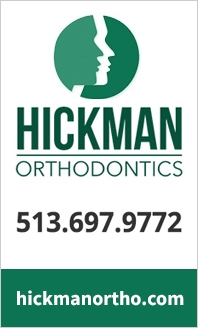Know the facts about EdChoice

The state of Ohio’s EdChoice Scholarship, or voucher program, began as a way to provide options for students whose local public schools were considered to be “failing” or “underperforming” by the state. However, the program has expanded to include students attending not only passing but thriving public schools.
There are two parts to the EdChoice program:
- The EdChoice Expansion program provides a state-paid voucher for students whose family income is at or below 200% of the federal poverty level. They can use this money to attend a private school regardless of their public school’s performance.
- The EdChoice Scholarship provides a voucher for students whose public school is considered a “failing school” by the state. This voucher is paid for by the local public school district.
Ohio went from fewer than 300 school buildings eligible for vouchers in the 2018-19 school year to more than 1,200 buildings for the 2020-21 school year, a 300% increase in two years.
Students entering kindergarten or high school do not need to have ever been a student in the public school district to qualify for an EdChoice scholarship, so long as their assigned public school is on the EdChoice list.
What is the amount of the EdChoice Scholarship?
$4,650 for students in grades K-8 and $6,000 for grades 9-12 for the 2020-21 school year.
How are EdChoice Scholarship vouchers funded?
This is not a state-funded program. The money used to pay for the vouchers comes from local property taxes. There is no “pass through” money from the state through the district to pay for these vouchers. The public school district must pay the scholarship amounts for as long as the student remains in private school - even if the public school is removed from the EdChoice list.
Additionally, once a student receives a voucher, the public school is responsible for paying the voucher every year, even if the report card improves. This can be at a cost of more than $65,000 to the public school district over the course of a student’s academic career.
What criteria is used to determine this designation?
The Ohio Department of Education uses data from the Ohio School Report Card from 2013-14, 2017-18 and 2018-19 to designate a school as “underperforming." A school building is determined eligible for EdChoice if they meet one or more of the following conditions during two of three reported years:
- Performance – If any of the following is true for two (2) report cards from 2014, 2018 and 2019: The school received a Performance Index grade of D or F and a Value-Added (overall) grade of D or F on the 2014 report card or the school received an overall grade of D or F or a Value-Added (overall) grade of F on the 2018 or 2019 report card.
- Graduation – The school serves grades 9-12 and received a Graduation Rate grade of D or F on any two report cards from 2014, 2018 and 2019.
- Lowest 10% - The school(s) ranked in the lowest 10 percent of public school buildings on the Performance Index on the Ohio School Report Cards for any two Performance Index rankings from 2014, 2018 and 2019; the school did not receive an overall grade of A or B on the 2019 report card.
- Literacy – The school received a grade of D or F for Improving At-Risk K-3 Readers on any two report cards from 2014, 2018 and 2019.
- District Performance – No districts are eligible under this criterion.
- Academic Distress – The school’s public district has an academic distress commission.
Are any of Little Miami’s schools designated as “underperforming”?
Yes. Little Miami will have one school with this designation for the 2020-21 school year, Salem Twp. Elementary. However, this school has received a passing grade from the State of Ohio and has won the Ohio Dept. of Education’s Momentum Award for two years in a row. Over 47% of schools on the current list have received an overall grade of “A”, “B” or “C”.
How are private/parochial schools graded by the State?
They’re not. Private schools are not held to the same accountability as public schools. Their students are not subjected to the same state testing as public school students, even though they are receiving public funds.
According to data collected by the Ohio Department of Education, as well as a study performed by the Thomas B. Fordham Foundation, voucher students in private schools performed worse than their public counterparts in reading and math.
Are private/parochial schools required to accept all students who are eligible for the EdChoice Scholarship?
No. Private/parochial schools are able to be selective with their enrollment process while public schools accept all students.
What are the next steps?
The Ohio Legislature is currently considering the effects and possible amendment of this program. Ohio residents are encouraged to contact their legislators if they have concerns.
- Ohio Sen. Steve Wilson, [email protected]
- Ohio State Rep. Scott Lipps, [email protected]

